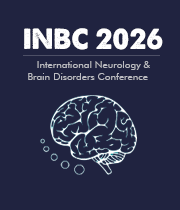Lewy Body Dementia
Lewy body dementia, also known as dementia with Lewy bodies (DLB), is a type of progressive dementia that leads to a decline in thinking, reasoning, and autonomic function. It is one of the most common types of dementia, and is characterized by the presence of Lewy bodies, tiny deposits of the protein alpha-synuclein found in the neurons of the brain. These Lewy bodies are believed to contribute to changes in neurotransmission and the death of neurons. The cause of Lewy body dementia is still unknown, but there are several contributing factors, including age, genetics, and a history of traumatic brain injury. Scientists have also suggested that the condition may be linked to certain environmental toxins, including pesticides, herbicides, and heavy metals. The most common symptoms of Lewy body dementia are cognitive problems, including difficulties with memory, planning, problem solving, judgment, and decision-making. Changes in behavior are also common, such as depression, confusion, irritability, hallucinations, and delusions. Other symptoms can include visual problems, such as difficulty recognizing objects or the inability to read or write. Patients may also experience consistent low blood pressure, falls, unsteady gait, and rigidity of muscles in the trunk and limbs. Diagnosis of Lewy body dementia is made through a clinical evaluation by a doctor, who will take a detailed medical history and conduct a physical and neurological examination. Additionally, a PET scan or MRI can be used to look for the presence of Lewy bodies in the brain. Once diagnosed, there are currently no cures for Lewy body dementia. However, there are some treatments available to help manage the symptoms of this condition, such as using medications to control delusions or visual problems, cognitive behavioral therapy to address behavioral issues, and physical and occupational therapy to reduce mobility problems. It is important to recognize the signs and symptoms of Lewy body dementia so that an accurate diagnosis can be made and early treatment can be initiated. While there is currently no cure, with early diagnosis and treatment of this condition, patients can still enjoy a good quality of life.

Joe Sam Robinson
Mercer University, United States
Robert B Slocum
University of Kentucky HealthCare, United States
George Diaz
Memorial Healthcare Systems, United States
Daniel Curry
Texas Children’s Hospital, United States
Zhenhuan Liu
Guangzhou University Chinese Medicine, China
Kiran Ghotra
Lake Erie College of Osteopathic Medicine, United States




Title : Atypical presentation of Juvenile myoclonic epilepsy in a 16-year-old female: A Case Report
George Diaz, Memorial Healthcare Systems, United States
Title : Narrative medicine: A communication therapy for the communication disorder of Functional Seizures (FS) [also known as Psychogenic Non-Epileptic Seizures (PNES)]
Robert B Slocum, University of Kentucky HealthCare, United States
Title : Nanoparticles passing the blood brain barrier to treat cancer, infection, and more
Thomas J Webster, Brown University, United States
Title : Managing healthcare transformation towards personalized, preventive, predictive, participative precision medicine ecosystems
Bernd Blobel, University of Regensburg, Germany
Title : Transcranial painless neurorehabilitation scalp acupuncture electrical stimulation for neuroregulation of autism spectrum disorder
Zhenhuan Liu, Guangzhou University Chinese Medicine, China
Title : The million-dollar workup
Zoe Reinus, University of Connecticut, United States